The Effect of Silicone Resin on the Fuel Oil Corrosion Resistance of Asphalt Mixture
Abstract
:1. Introduction
2. Materials and Methods
2.1. Materials
2.2. Sample Preparation
2.2.1. Asphalt Mixture Design
2.2.2. Sample Preparation and Treatment
2.3. Experimental Testing
2.3.1. Chemical Composition of Silicone Resin
2.3.2. Contact Angle
2.3.3. Cantabro Test
2.3.4. Water Stability
2.3.5. High Temperature Performance
2.3.6. Low-Temperature Performance
3. Results and Discussion
3.1. Chemical Composition of Silicone Resin
3.2. Infiltration Properties
3.3. Adhesive Properties
3.4. Water Stability
3.5. High-Temperature Properties
3.6. Low-Temperature Properties
4. Conclusions
- (1)
- The contact angle between cured silicone resin and water is 102.2°, which has strong hydrophobicity and can play an excellent role in water damage resistance in asphalt mixture. The contact angles of gasoline and diesel oil with asphalt are 27.4° and 30.3° respectively, the contact angle between gasoline and asphalt is smaller and the solubility of asphalt is stronger. The contact angles between gasoline and diesel oil and cured silicone resin are 40.4° and 22.2°, respectively; the contact angle between diesel oil and cured silicone resin is smaller, which may cause more damage to the dissolution and corrosion of cured silicone resin.
- (2)
- The asphalt mixture was treated with silicone resin, the immersion dispersion loss was reduced by 1.4%, the rutting depth by 10.0%; and increases were seen in the residual Marshall stability by 7.7%, in the freeze–thaw splitting residual strength ratio by 1.1%, the rutting dynamic stability by 4.7%, the low-temperature bending failure strength by 11.0% and the strain by 9.1%. The adhesion, water stability, high temperature rutting resistance and low-temperature cracking resistance of asphalt mixture were improved.
- (3)
- Different types of fuel oil have different corrosion effects on asphalt mixtures. The compatibility of gasoline and asphalt is greater than that of diesel oil, and the performance attenuation range of asphalt mixture after gasoline corrosion is generally larger than that of diesel oil, indicating that the compatibility of fuel oil and asphalt has a certain correlation with the degradation degree of asphalt mixture performance after fuel oil corrosion.
- (4)
- Silicon resin treatment can inhibit the corrosion of fuel oil to asphalt mixture, and the inhibition effect on corrosion of different fuel oils is different with different characterization indexes. It might because different characterization indexes have different sensitivity to the oil corrosion resistance of asphalt mixture treated with silicone resin. On the other hand, the influence of silicone resin on the oil corrosion resistance of asphalt mixture is the result of the comprehensive effect of oil source on the dissolution and corrosion of asphalt and cured silicone resin, which needs to be further studied.
Author Contributions
Funding
Institutional Review Board Statement
Informed Consent Statement
Data Availability Statement
Conflicts of Interest
References
- Xu, S.; García, A.; Su, J.; Liu, Q.; Tabaković, A.; Schlangen, E. Self-healing asphalt review: From idea to practice. Adv. Mater. Interfaces 2018, 5, 1800536. [Google Scholar] [CrossRef] [Green Version]
- Bazzaz, M.; Darabi, M.; Little, D.; Garg, N. A straightforward procedure to characterize nonlinear viscoelastic response of asphalt concrete at high temperatures. Transp. Res. Rec. 2018, 2672, 481–492. [Google Scholar] [CrossRef]
- Wang, F.; Xie, J.; Wu, S.; Li, J.; Barbieri, D.M.; Zhang, L. Life cycle energy consumption by roads and associated interpretative analysis of sustainable policies. Renew. Sustain. Energy Rev. 2021, 141, 110823. [Google Scholar] [CrossRef]
- Pang, L.; Zhang, X.; Wu, S.; Ye, Y.; Li, Y. Influence of water solute exposure on the chemical evolution and rheological properties of asphalt. Materials 2018, 11, 983. [Google Scholar] [CrossRef] [PubMed] [Green Version]
- Zou, Y.; Amirkhanian, S.; Xu, S.; Li, Y.; Wang, Y.; Zhang, J. Effect of different aqueous solutions on physicochemical properties of asphalt binder. Constr. Build. Mater. 2021, 286, 122810. [Google Scholar] [CrossRef]
- Li, N.; Jiang, Q.; Wang, F.; Cui, P.; Xie, J.; Li, J.; Wu, S.; Barbieri, D. Comparative assessment of asphalt volatile organic compounds emission from field to laboratory. J. Clean. Prod. 2021, 278, 123479. [Google Scholar] [CrossRef]
- Zhang, R.; Huang, X. Analysis on the oil corrosion performance of asphalt binders and mixtures. Highway 2006, 51, 173–175. [Google Scholar]
- Li, S.; Li, H. Asphalt mixture oil corrosion evaluation method based on oil corrosion degree. J. Wuhan Univ. Technol. 2015, 37, 32–37. [Google Scholar]
- Li, H.; Li, S. Research on asphalt oil corrosion mechanism. Highway Eng. 2016, 41, 229–231. [Google Scholar]
- Mora, B.; Hilpert, M. Differences in infiltration and evaporation of diesel and gasoline droplets spilled onto concrete pavement. Sustainability 2017, 9, 1271. [Google Scholar] [CrossRef] [Green Version]
- Cao, X.; Li, H.; Li, S.; Zhang, G. Research on the long term impact of diesel leak on asphalt concrete pavement. Highway 2016, 5, 194–198. [Google Scholar]
- Huang, K.; Li, S.; Li, H. Influence of coal tar leakage on asphalt concrete pavement and treatment effect evaluation. Highway 2017, 4, 265–268. [Google Scholar]
- Li, S.; Li, H. A new evaluation method of oil corrosion for asphalt mixture. J. Chongqing Jiaotong Univ. 2016, 35, 54–57. [Google Scholar]
- Tan, Z.; Li, H. Effect of diesel leakage on asphalt pavement performance. Sci. Technol. Eng. 2018, 18, 326–330. [Google Scholar]
- Chen, S.; Guan, B.; Xiong, R.; Sheng, Y.; He, R. Durability of asphalt mixture in different corrosion solution. J. Wuhan Univ. Technol. 2011, 26, 1200–1204. [Google Scholar] [CrossRef]
- Chen, K.; Yuan, J.; Zhang, Y. Effect of oil corrosion on high temperature performance of asphalt mixtures. Shanghai. Highway 2013, 32, 59–72. [Google Scholar]
- Zha, X.; Fu, G.; Xu, J. Influence of oil corrosion on water stability for TLA modified asphalt mixture. J. Changsha Univ. Sci. Technol. 2009, 6, 1–5. [Google Scholar]
- Du, X.; Liu, S.; Zhang, H.; Liu, W.; Lin, H. Test method to evaluate the fuel oil corrosion resistance of asphalt binders. Constr. Build. Mater. 2021, 292, 123416. [Google Scholar] [CrossRef]
- Li, K. Research on Pavement Performance of Anti-Oil Corrosion Asphalt Mixture Master Thesis. Master’s Thesis, Nanjing Forestry University, Nanjing, China, 2018. [Google Scholar]
- Li, M.; Niu, X.; Li, H.; Sun, C. Analysis of capability for withstanding oil corrosion of asphalt mixture. Highway 2002, 1, 75–77. [Google Scholar]
- Wang, J.; Huang, X. Test and research on resistance to corrosion of asphalt mixture in diesel oil. Highway 2012, 57, 229–231. [Google Scholar]
- Xu, J. Research on Oil Corrosion for TLA Modified Asphalt and Its Mixture Master Thesis. Master’s Thesis, Changsha University of Science and Technology, Changsha, China, 2008. [Google Scholar]
- Li, P.; Li, X.; Nie, L.; Liu, H.; Zhang, A. Research on the effect of anti-oil modifier on the performance of asphalt mixture. Constr. Technol. 2016, 45, 370–372. [Google Scholar]
- Li, Q.; Li, K.; Zhao, K.; Sun, G.; Luo, S. Fuel oil corrosion resistance of asphalt mixtures. Constr. Build. Mater. 2019, 220, 10–20. [Google Scholar] [CrossRef]
- Zheng, X.; Easa, S.; Yang, Z.; Ji, T.; Jiang, Z. Life-cycle sustainability assessment of pavement maintenance alternatives: Methodology and case study. J. Clean. Prod. 2019, 213, 659–672. [Google Scholar] [CrossRef]
- Zhang, Y.; Martin, V.; Andre, M.; Wu, S. Preventive maintenance of porous asphalt concrete using surface treatment technology. Mater. Design. 2016, 99, 262–272. [Google Scholar] [CrossRef]
- Xu, B.; Li, M.; Liu, S.; Fang, J.; Ding, R.; Cao, D. Performance analysis of different type preventive maintenance materials for porous asphalt based on high viscosity modified asphalt. Constr. Build. Mater. 2018, 191, 320–329. [Google Scholar] [CrossRef]
- Chaturabong, P.; Lim, T.; Wong, Y. Effective surface treatment techniques for refinishing oil-stained road surface. Constr. Build. Mater. 2018, 159, 64–72. [Google Scholar] [CrossRef]
- Lima, M.; Buttgereit, A.; Queiroz, C.; Haritonovs, V.; Gschösser, F. Optimizing financial allocation for maintenance and rehabilitation of munster’s road network using the world bank’s RONET model. Infrastructures 2022, 7, 32. [Google Scholar] [CrossRef]
- Lin, J.; Chen, M.; Wu, S. Utilization of silicone maintenance materials to improve the moisture sensitivity of asphalt mixtures. Constr. Build. Mater. 2012, 33, 1–6. [Google Scholar] [CrossRef]
- Lv, Y.; Wu, S.; Cui, P.; Liu, Q.; Li, Y.; Xu, H.; Zhao, Y. Environmental and feasible analysis of recycling steel slag as aggregate treated by silicone resin. Constr. Build. Mater. 2021, 299, 123914. [Google Scholar] [CrossRef]
- Cui, P.; Wu, S.; Xu, H.; Lv, Y. Silicone resin polymer used in preventive maintenance of asphalt mixture based on fog seal. Polymers 2019, 11, 1814. [Google Scholar] [CrossRef]
- Wu, S.; Li, B.; Liu, X.; Liu, G.; Ye, Q. Research and application of water-tight agent used in asphalt pavement. J. Wuhan Univ. Technol. 2005, 29, 663–666. [Google Scholar]
- JTG E20-2011; Standard Test Method of Bitumen and Bituminous Mixtures for Highway Engineering. Research Institute of Highway, Ministry of Transport, China Communications Press: Beijing, China, 2011.
- JTG E42-2005; Test Methods of Aggregate for Highway Engineering. Research Institute of Highway, Ministry of Transport, China Communications Press: Beijing, China, 2005.
- JTG F40-2004; Technical Specification for Construction of Highway Asphalt Pavements. Research Institute of Highway, Ministry of Transport, China Communications Press: Beijing, China, 2004.
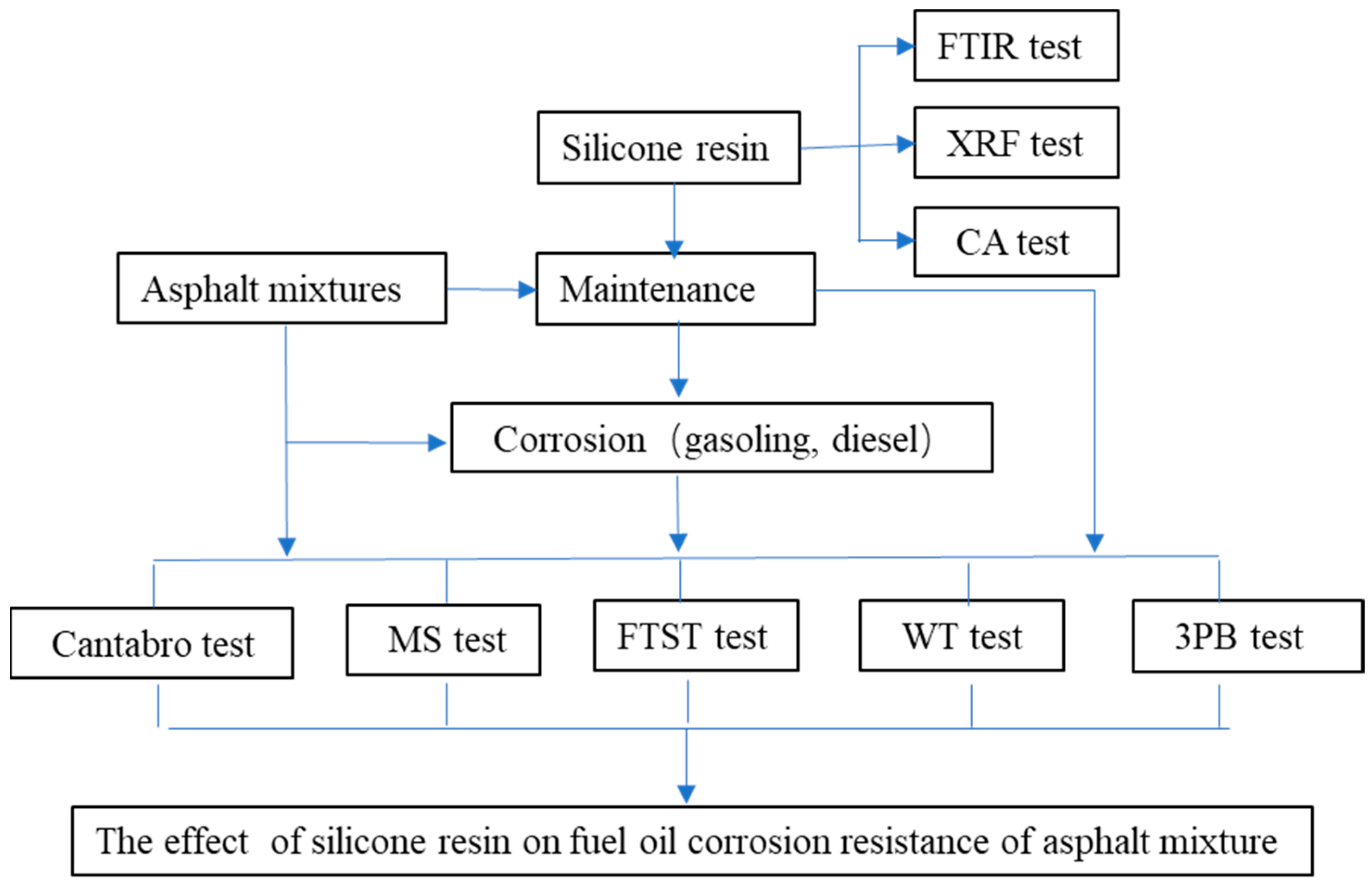
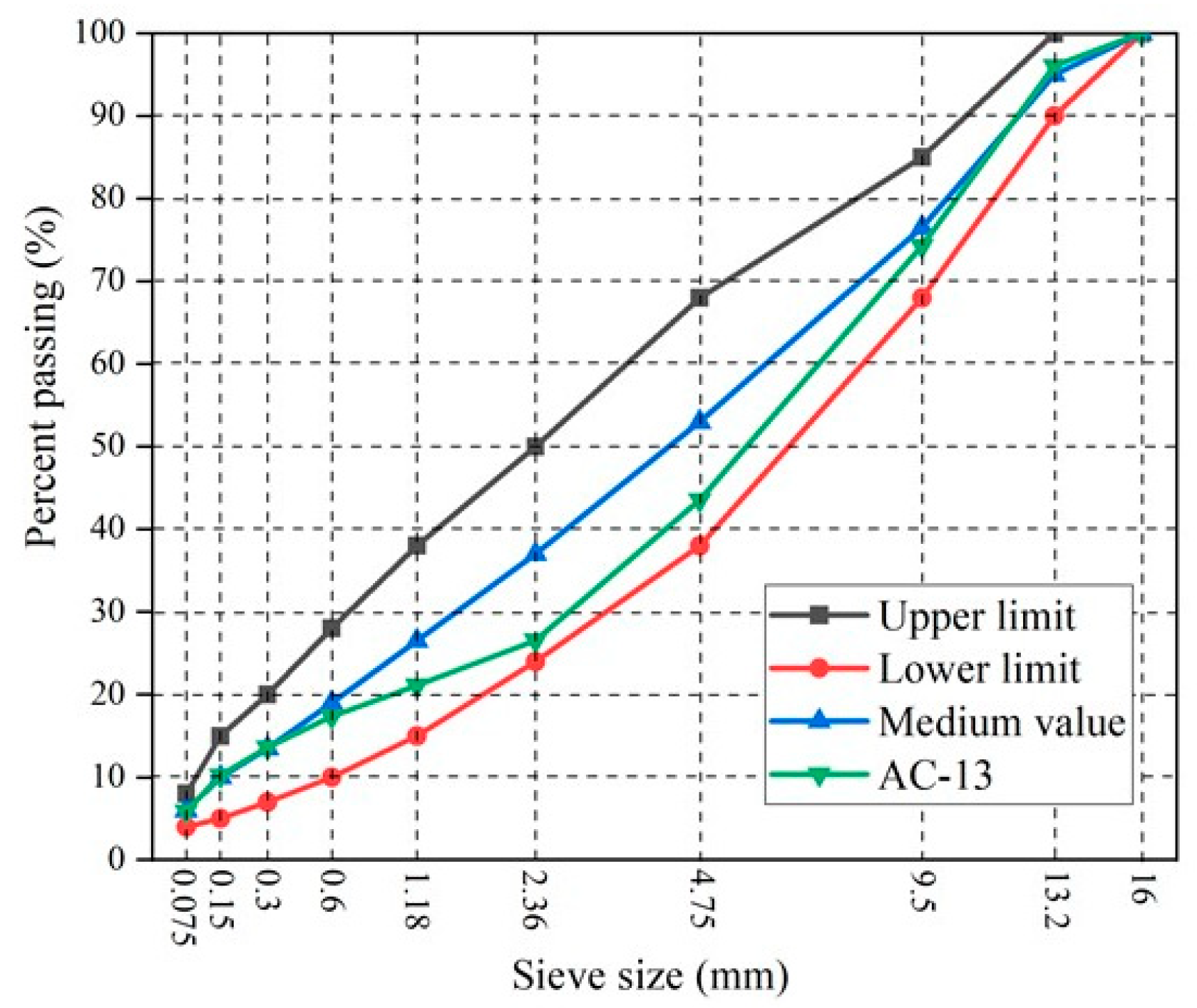
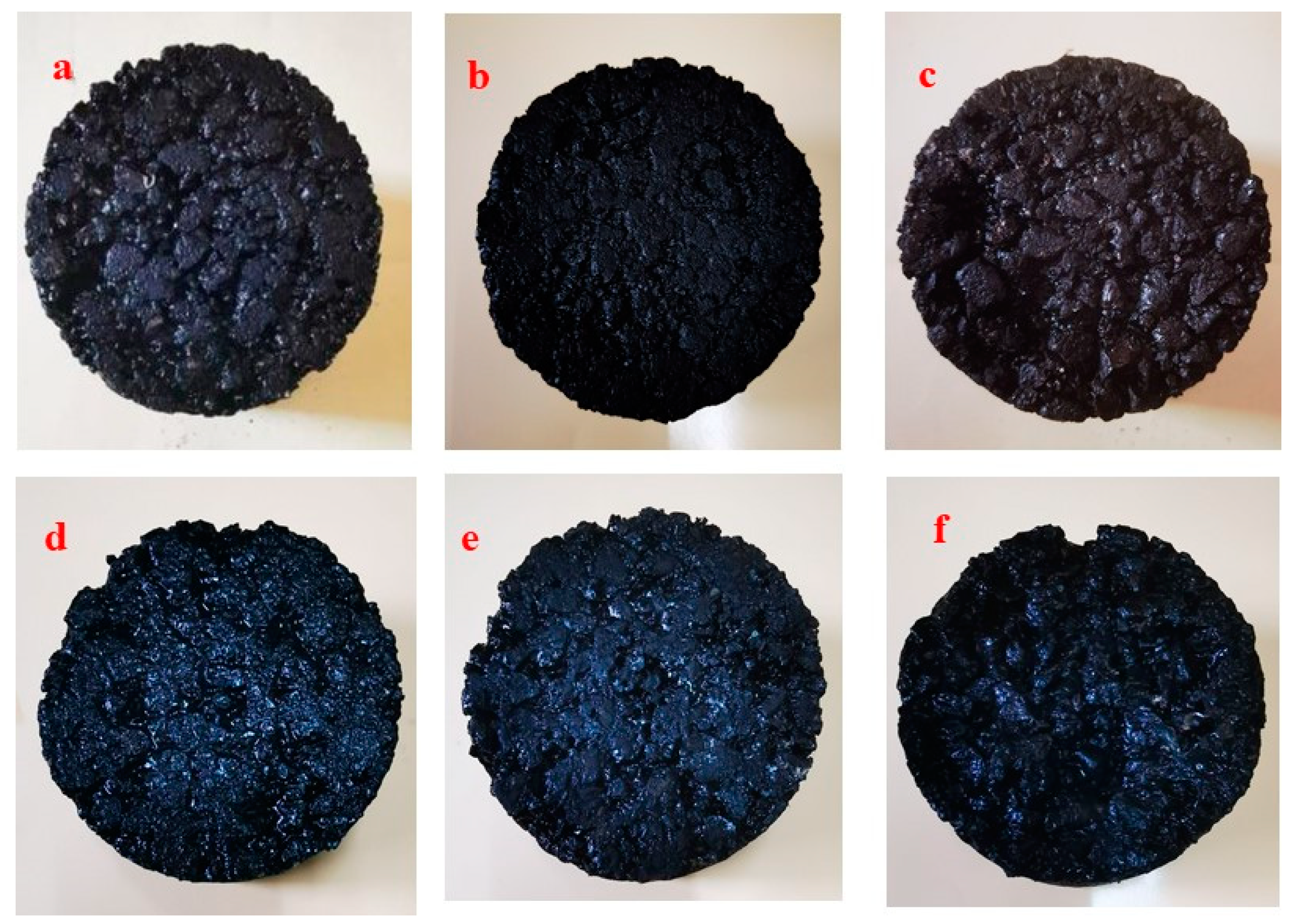





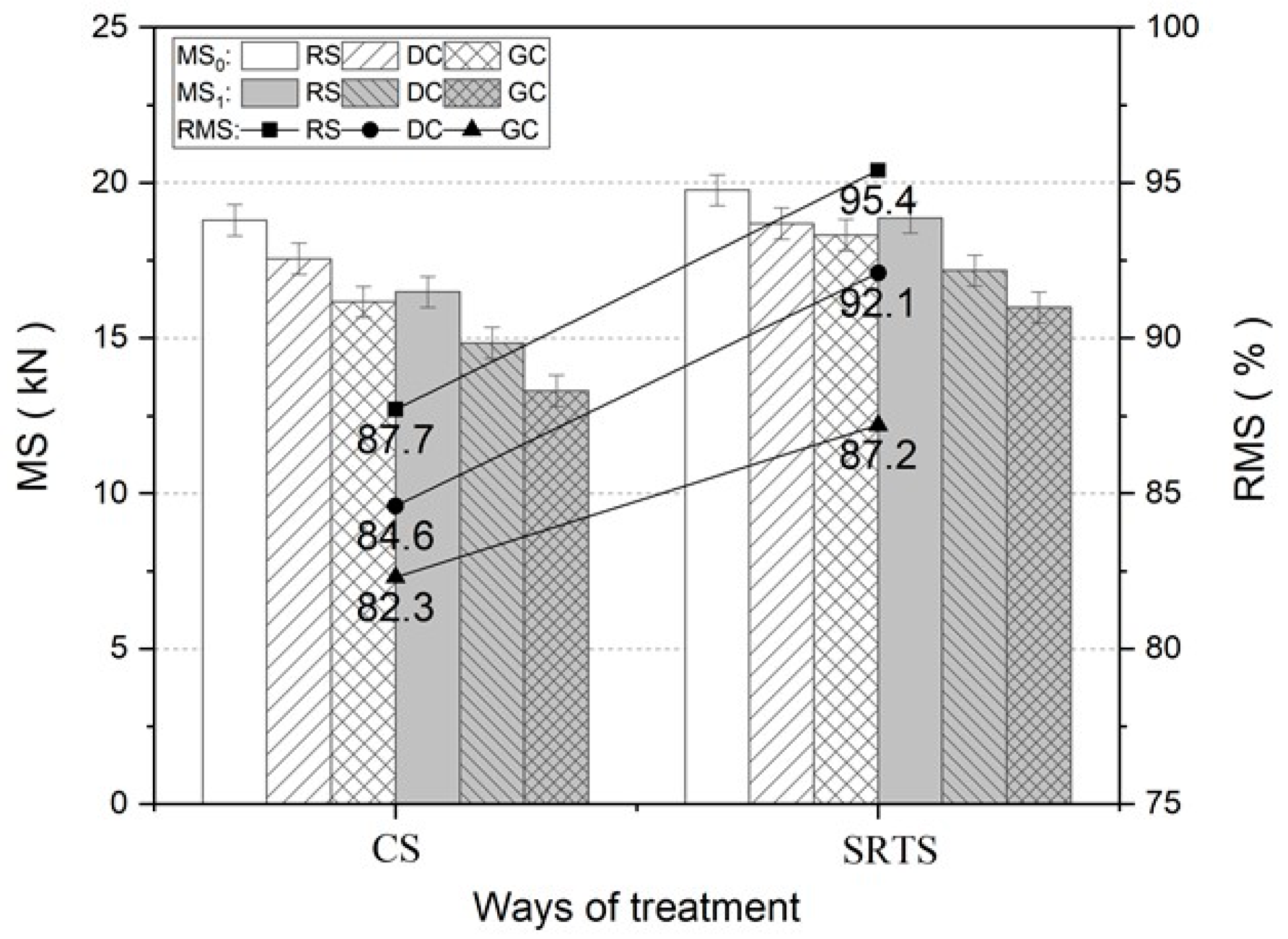
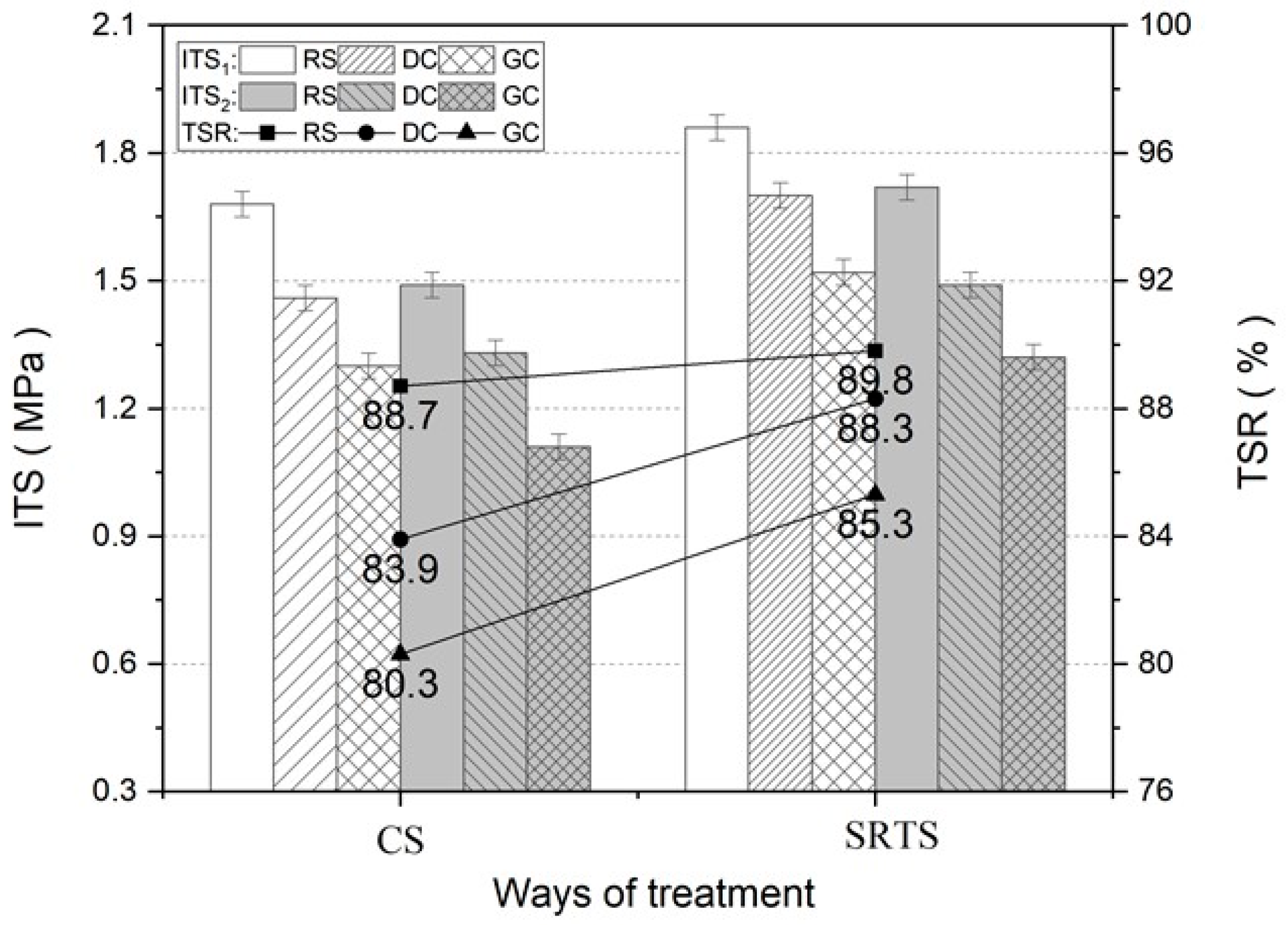

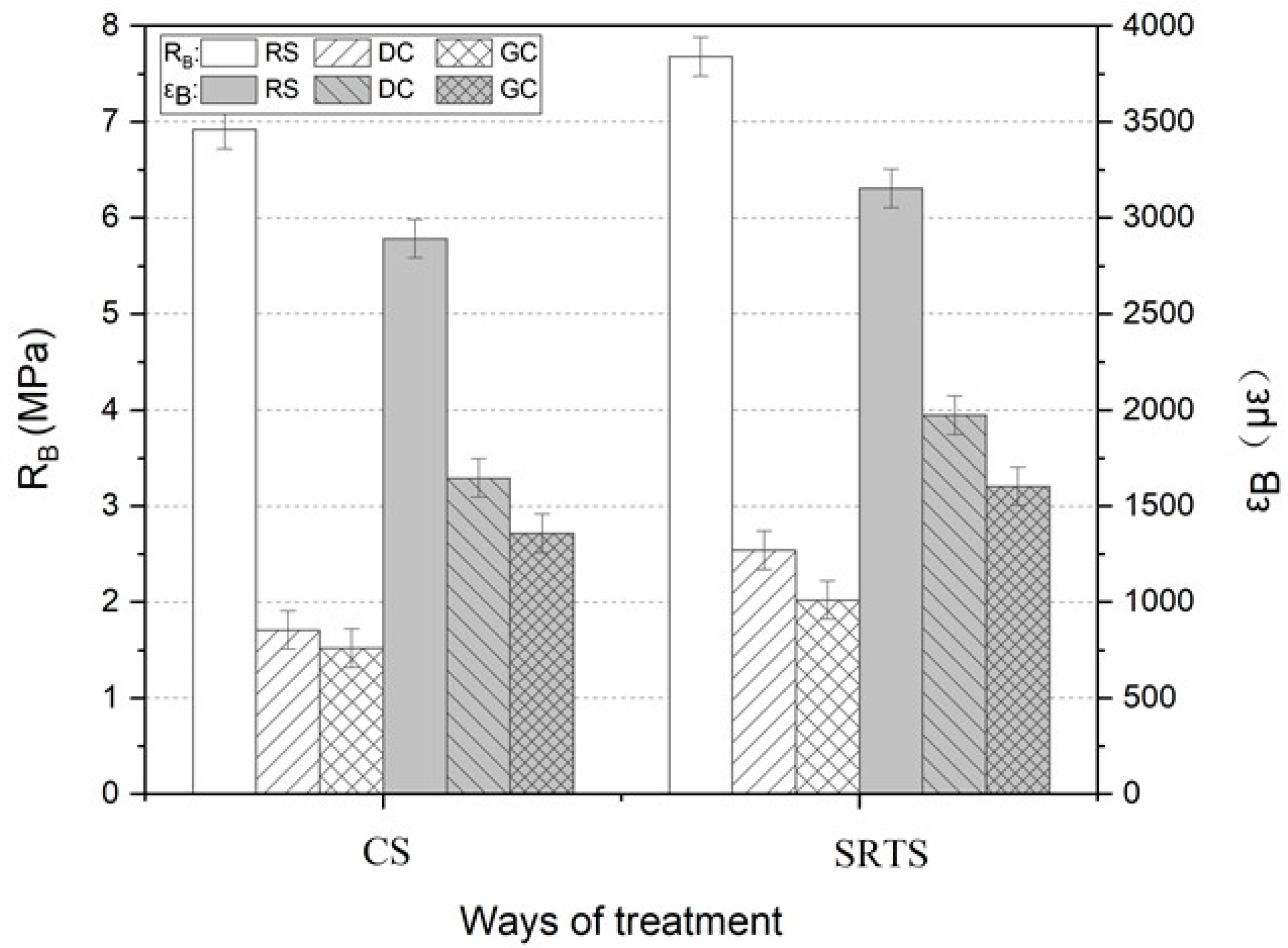
| Properties | Unit | Tested Value | Criteria in China |
|---|---|---|---|
| Penetration (25 °C, 100 g, 5 s) | 0.1 mm | 56.7 | 40~60 |
| Softening point | °C | 76 | ≥60 |
| Ductility (5 cm/min, 5 °C) | cm | 59 | ≥20 |
| Brookfield viscosity (135 °C) | Pa·s | 2.7 | ≤3 |
| Solubility | % | 99.4 | ≥99.0 |
| Properties | Unit | Test Value | Criteria in China |
|---|---|---|---|
| Apparent relative density | / | 2.891 | ≥2.6 |
| Water absorption ratio | % | 0.745 | ≤2.0 |
| Flat and elongated particle content | % | 5.4 | ≤12 |
| Los Angeles abrasion loss | % | 15.7 | ≤28 |
| Crushed stone value | % | 13.7 | ≤26 |
| Element | SiO2 | CaO | Fe2O3 | P2O5 | Al2O3 | SO3 | Na2O | Cl | MnO | K2O | Loss |
|---|---|---|---|---|---|---|---|---|---|---|---|
| Content (%) | 99.49 | 0.10 | 0.10 | 0.08 | 0.07 | 0.06 | 0.03 | 0.03 | 0.02 | 0.01 | 0.01 |
Publisher’s Note: MDPI stays neutral with regard to jurisdictional claims in published maps and institutional affiliations. |
© 2022 by the authors. Licensee MDPI, Basel, Switzerland. This article is an open access article distributed under the terms and conditions of the Creative Commons Attribution (CC BY) license (https://creativecommons.org/licenses/by/4.0/).
Share and Cite
Gao, X.; Pang, L.; Xu, S.; Lv, Y.; Zou, Y. The Effect of Silicone Resin on the Fuel Oil Corrosion Resistance of Asphalt Mixture. Sustainability 2022, 14, 14053. https://doi.org/10.3390/su142114053
Gao X, Pang L, Xu S, Lv Y, Zou Y. The Effect of Silicone Resin on the Fuel Oil Corrosion Resistance of Asphalt Mixture. Sustainability. 2022; 14(21):14053. https://doi.org/10.3390/su142114053
Chicago/Turabian StyleGao, Xiang, Ling Pang, Shi Xu, Yang Lv, and Yingxue Zou. 2022. "The Effect of Silicone Resin on the Fuel Oil Corrosion Resistance of Asphalt Mixture" Sustainability 14, no. 21: 14053. https://doi.org/10.3390/su142114053






